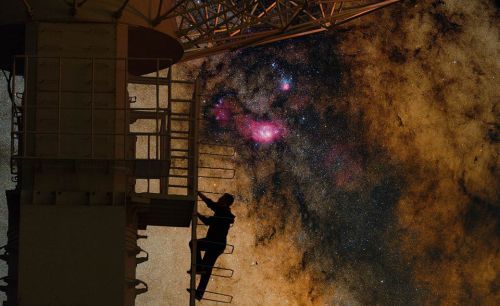If you want a reminder of just how gorgeous our universe is, then take some time to browse the winners of the 2020 Insight Investment Astronomy Photographer of the Year competition.
French photographer Nicolas Lefaudeux took the top prize with a tilt-shift perspective on the Andromeda Galaxy.
The winning images are part of an exhibition opening on October 23 at the National Maritime Museum in London and have been collected into a book.
Cue some truly innovative an unexpected captures of galaxies, nebulae, planets, the Moon and even SpaceX satellites.
The Green Lady
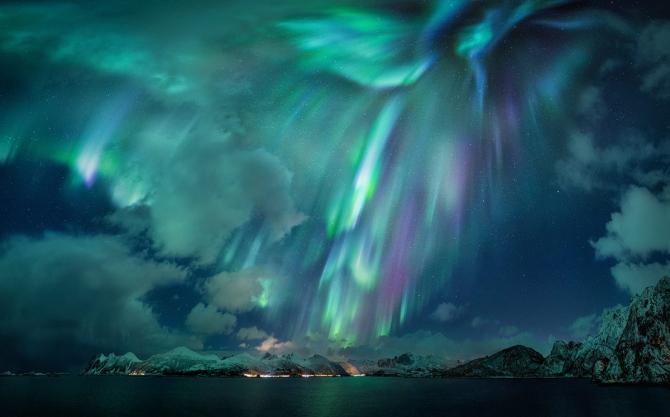
The photographer had heard a lot of stories about the ‘lady in green’. Although he has had the chance to photograph the northern lights many times, he had never seen the green lady before. On a journey to Norway, she unexpectedly appeared with her magical green clothes, making the whole sky burn with green, blue and pink hues. Photograph: Nicholas Roemmelt/2020 Astronomy Photographer of the year
Lone Tree under a Scandinavian Aurora
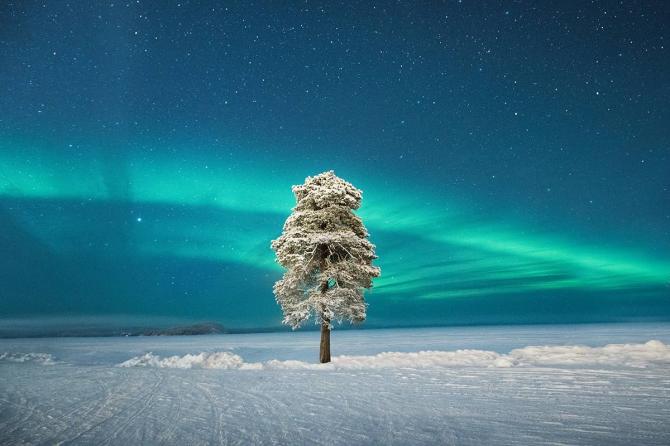
The photographer decided to explore the area around the hotel on a very crisp -35C evening in Finnish Lapland. When he found this tree, he decided to wait for the misty conditions to change and could not believe his luck when the sky cleared and the aurora came out in the perfect spot. Archer spent about an hour photographing it before his camera started to lock up because of the harsh conditions, but by then he was happy to call it a night. Photograph: Tom Archer/2020 Astronomy Photographer of the year
Waves
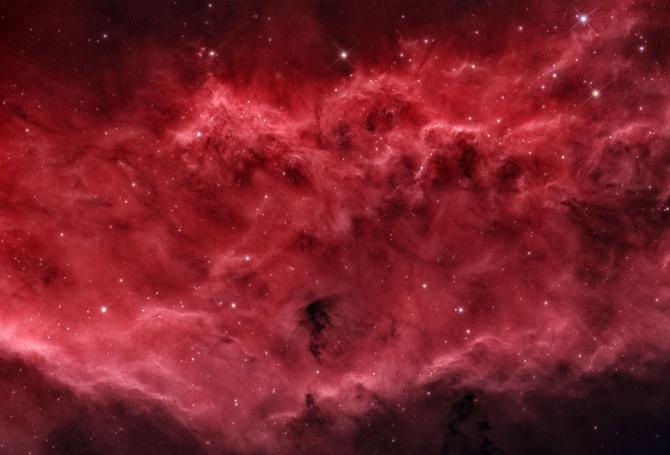
The image shows the central region of the California nebula. It captures the uncontrollable and vast energy of nature in a form that resembles the huge waves of a storm in the ocean. Photograph: Bence Toth/2020 Astronomy Photographer of the year
NGC 3628 with 300,000 Light Year Long Tail

NGC 3628 is a popular galaxy target for both astrophotographers and visual observers, with its distinctive dust lane. Studies by professional astronomers have shown that the evolution of some galaxies are the product of a series of minor merges with smaller dwarf galaxies. This image is an epic undertaking of five years of exposures taken with three telescopes, although the majority of the exposure was in 2019. The goal of this mosaic is to show the tidal tail, measuring 300,000 light years in length. Photograph: Mark Hanson/2020 Astronomy Photographer of the year
Andromeda Galaxy at Arm's Length
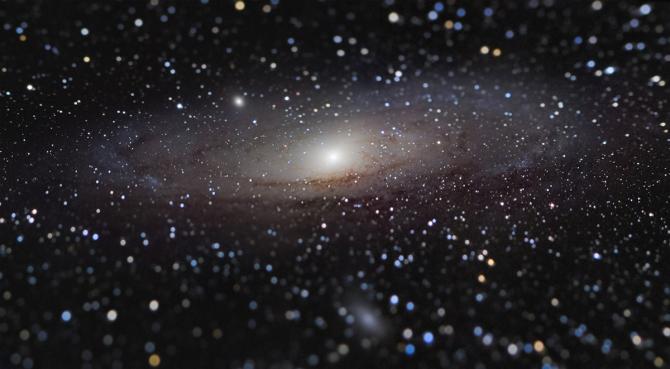
The competition’s overall winner Andromeda Galaxy at Arm’s Length. Photograph: Nicolas Lefaudeux/2020 Astronomy Photographer of the year
Attack on the Large Magellanic Cloud
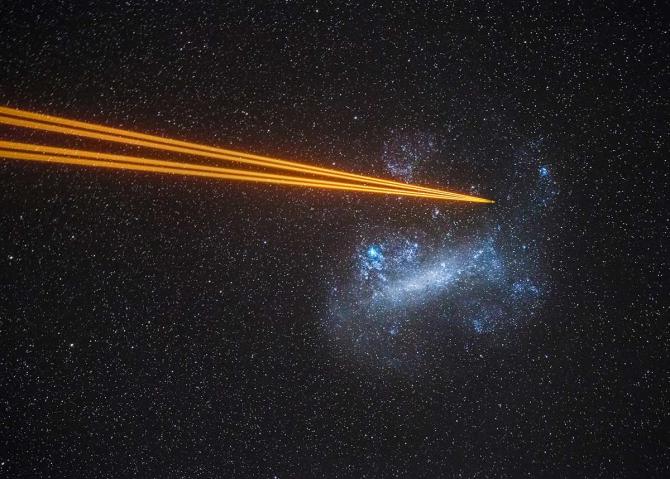
Despite what the title might imply, this image has nothing to do with space warfare. It shows four lasers of one of the telescopes at Paranal observatory pointing towards a globular cluster in the large magellanic cloud. The lasers excite sodium atoms located in a layer about 80–90km above the ground. This creates the four artificial ‘stars’ at the very ends of the laser beams. Photograph: Juan Carlos Munoz-Mateos/2020 Astronomy Photographer of the year
Tycho Crater Region with Colours
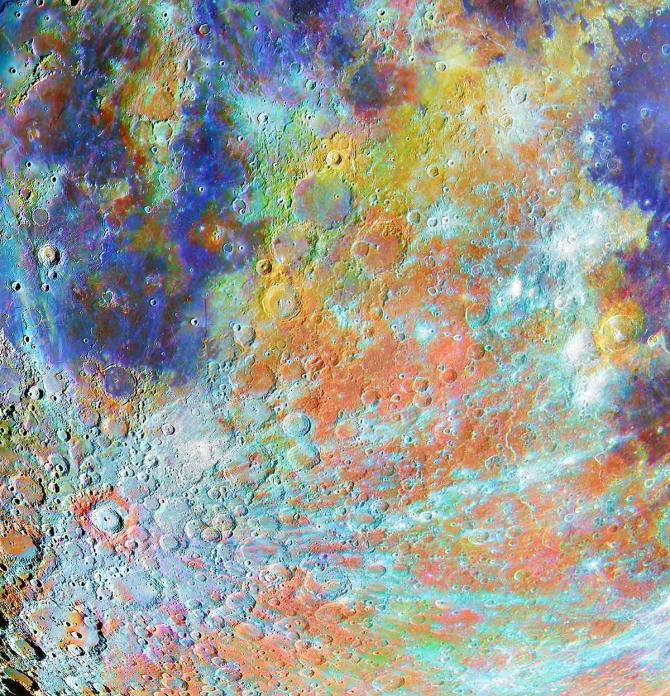
The Tycho crater is one of the most famous on the moon. This huge impact has left impressive scars on the lunar surface. With the colours of the soil, Tycho is even more impressive. This picture combines one session with a black-and-white camera, to capture the details and sharpness, and one session with a colour camera, to show the colours of the soils. These hues come mainly from metallic oxides in small balls of glass. The blue shows high titanium oxide concentration and the red shows high iron oxide concentration. Photograph: Alain Paillou/2020 Astronomy Photographer of the year
Partial Lunar Eclipse with Clouds
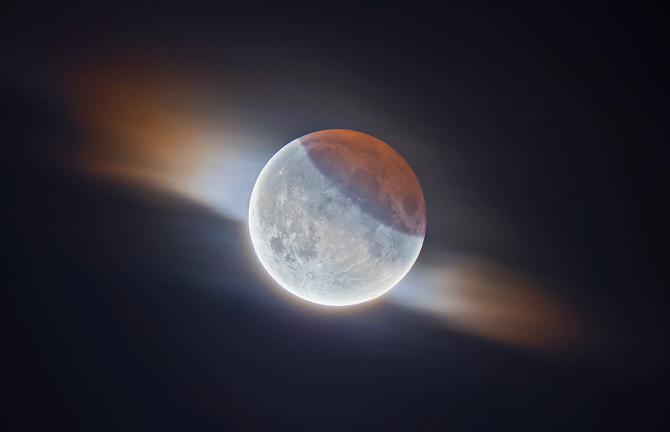
During the 2019 partial lunar eclipse, the photographer managed to capture this fantastic image of the moon while a small cloud passed in front of it. You can see the Earth’s shadow on the top right and its striking orange colour caused by the sun’s light passing through the atmosphere. This is a high dynamic range image, meaning the darker, shadowed region is correctly exposed as well as the much brighter parts of the moon. Photograph: Ethan Roberts/2020 Astronomy Photographer of the year
Liquid Sunshine

Solar minimum may be seen as a quiet sun and deemed dull in white light, but if you look closely at the small-scale structure, the surface is alive with motion. This surface is about 100km thick and the ever-boiling motion of these convection cells circulate, lasting for about 15-20 minutes. They are about 1,000 km in size and create a beautiful ‘crazy paving’ structure. Photograph: Alexandra Hart/2020 Astronomy Photographer of the year
145 Seconds of Darkness
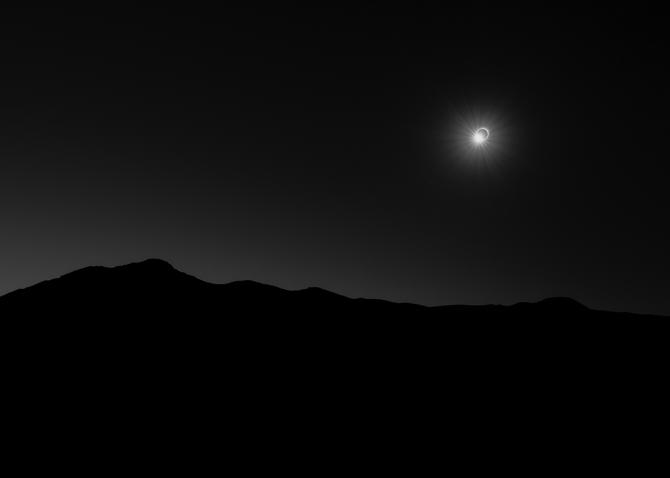
This image was taken during the total solar eclipse on 2 July 2019. The photographer travelled 8,000 miles (13,000km) from Poland to Chile to see the total solar eclipse. His plan was to create the most minimalist picture of this breathtaking event and capture the brief moment when nature freezes; the birds fly to their nests and the temperature drops during 145 seconds of darkness. Photograph: Filip Ogorzelski/2020 Astronomy Photographer of the year
Observe the Heart of the Galaxy

This image depicts the photographer climbing the radio telescope and Mingantu solar radio telescope array. First the photographer tested and moved his camera so that the M8 and M20 nebulae would appear right next to the telescope. After taking the foreground image, he moved his camera a little bit but still pointing at the same location in the sky, and captured the background with an equatorial mount. Photograph: Tian Li/2020 Astronomy Photographer of the year
Space Between Us
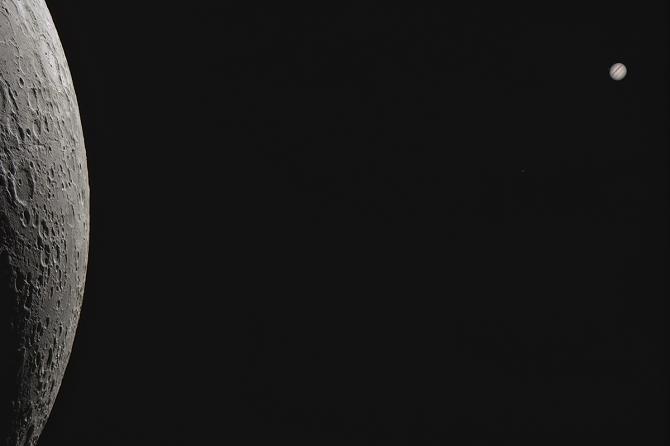
This image shows the close alignment of the moon and Jupiter that happened on October 31 2019. In the full resolution picture, three of Jupiter’s moons also visible. This small project is a big challenge that involves a lot of luck and good conditions. To capture this phenomenon in such a big scale was quite demanding in data acquisition as Jupiter and the moon travelled across the sky quite fast. It happened in altitude only 9 degrees above the horizon. Photograph: Łukasz Sujka/2020 Astronomy Photographer of the year
Painting the Sky
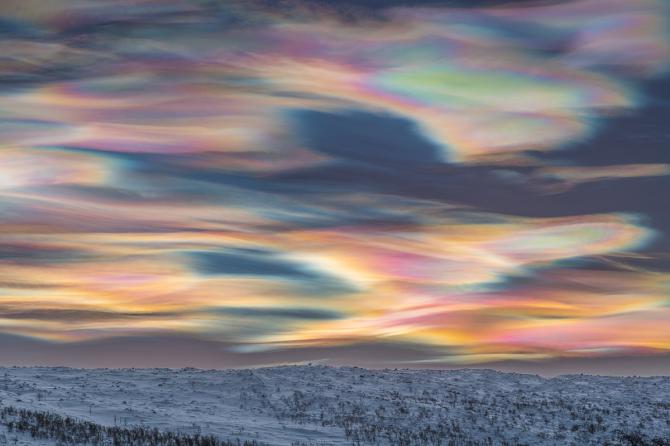
The photographer was searching for clear skies in Finnish Lapland to capture the beauty of a polar night and could not believe his eyes when he saw what was waiting behind the clouds. Polar stratospheric clouds are something Kast had been searching for many years and had seen only in photographs until that day. He took his camera on to a frozen river to get a good view and started to take photos. The clouds slowly changed their shape and colours to create a painterly image. Photograph: Thomas Kast/2020 Astronomy Photographer of the year
Desert Magic
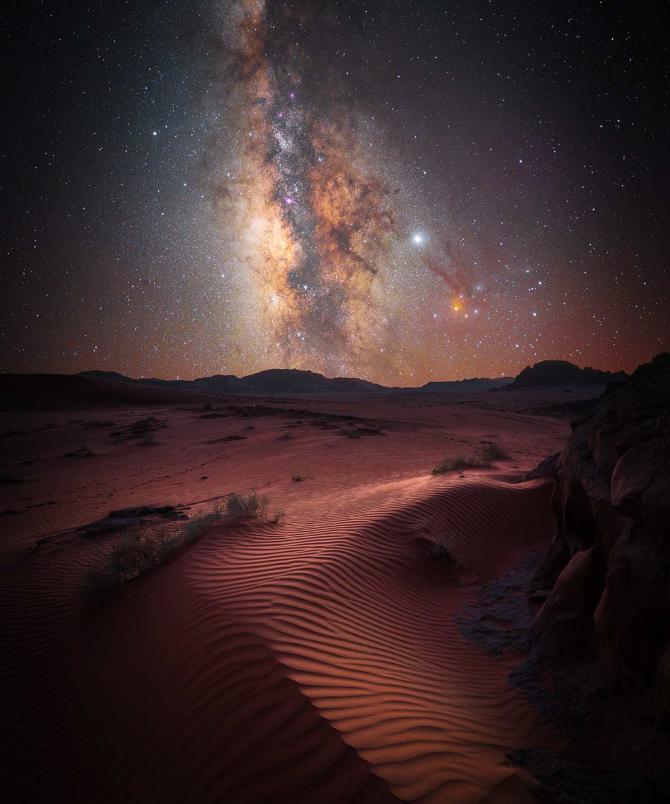
The photographer took this image during a trip through Jordan. He stayed for three days in the desert at Wadi Rum. The photographer tried to capture the amazing starry sky over the desert. He used a star tracker device to capture the image. Leibermann found this red dune as a foreground and snapped the imposing Milky Way centre in the sky. Photograph: Stefan Leibermann/2020 Astronomy Photographer of the year
Cosmic Inferno
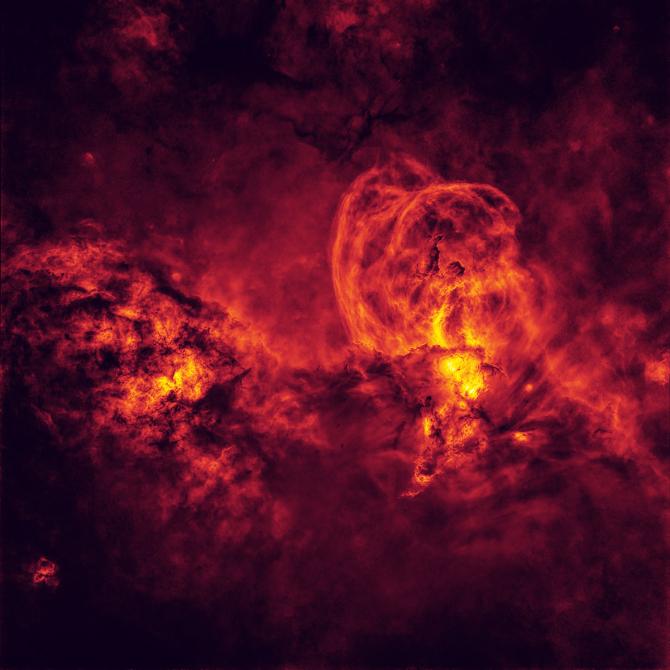
NGC 3576 is a well-known nebula in southern skies, but is shown here without any stars. Software reveals just the nebula, which has been mapped into a false colour palette. The scene takes on the look of a celestial fire-maelstrom. The image is intended to reflect media images taken in Australia in 2019 and 2020, where massive bushfires caused the destruction of native forests and have claimed more than 12m acres of land. It shows nature can act on vast scales and serves as a stark warning that our planet needs nurturing. Photograph: Peter Ward/2020 Astronomy Photographer of the year
The Dolphin Jumping out of an Ocean of Gas
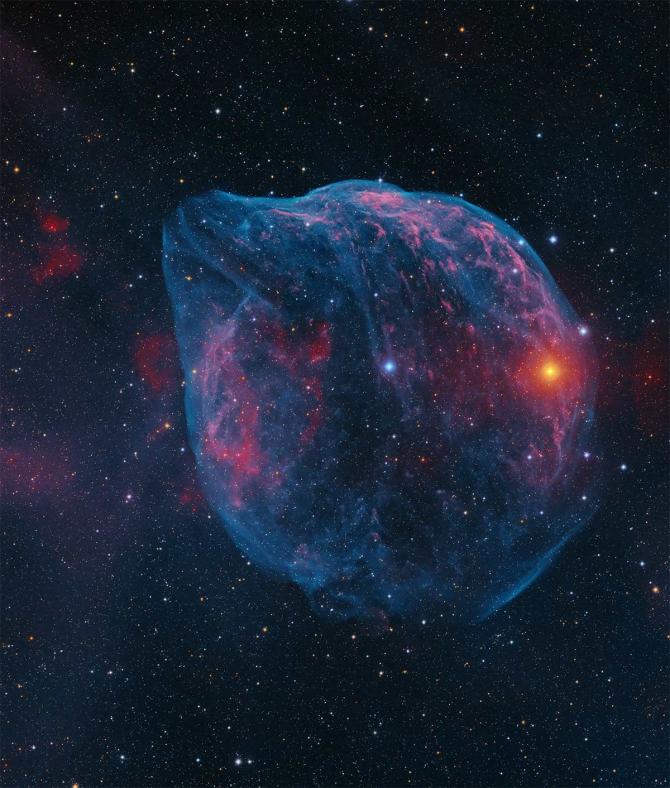
This target is officially known as Sh2-308 but the photographer has always enjoyed calling it the Dolphin nebula. It is a bubble of gas being shed by the bright blue star in the centre of the image as it enters its pre-supernova phase. The red star, to the right, could possibly be influencing the shape too and might be responsible for the bill of the dolphin. While it will not explode in our lifetimes, seeing the warning signs is valuable. Photograph: Connor Matherne/2020 Astronomy Photographer of the year
The Misty Elephant’s Trunk
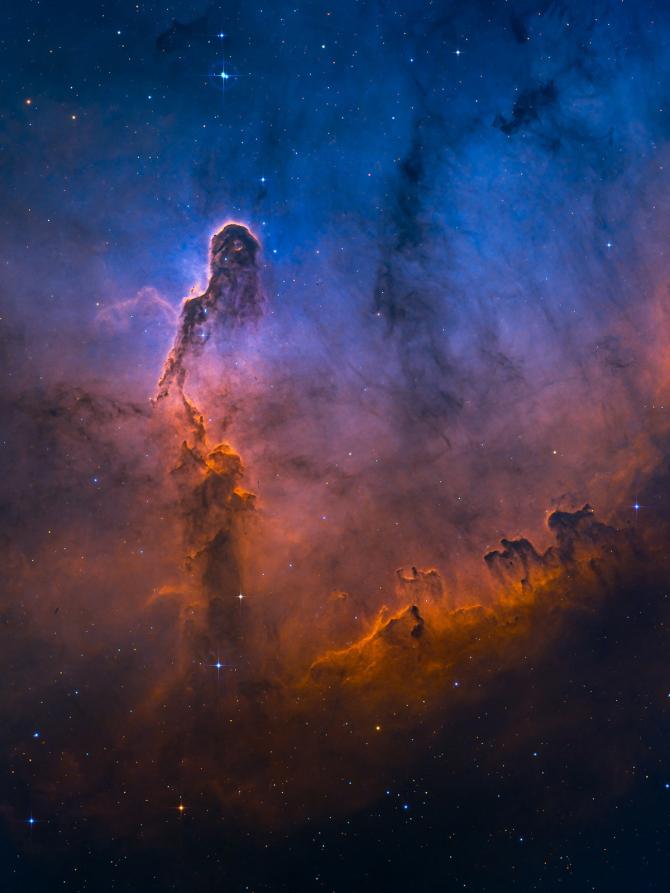
The photographer imaged IC 1396, known as the Elephant’s Trunk, in the Hubble palette from my light-polluted backyard in Coppell, Texas. This image presents the Elephant’s Trunk surrounded by the emission clouds with a misty feeling and an emphasised blue doubly-ionised oxygen area as the background. It gives the feeling of the trunk emerging from the distance. Photograph: Min Xie/2020 Astronomy Photographer of the year
The Four Planets and the Moon

Photographing a planetary alignment requires rigour and patience but also a lot of luck. That evening, despite preparing everything for a week, the photographer encountered clouds. The magic started after sunset, where the moonset, Venus, Mercury, the star Antares, Jupiter and Saturn could be seen over the Indian Ocean. By looking at the sky map. Note also the presence of Alpha Centauri on the left of the image as well as our immense galaxy, the Milky Way. Photograph: Alice Fock Hang/2020 Astronomy Photographer of the year
Azure Vapor Tracers
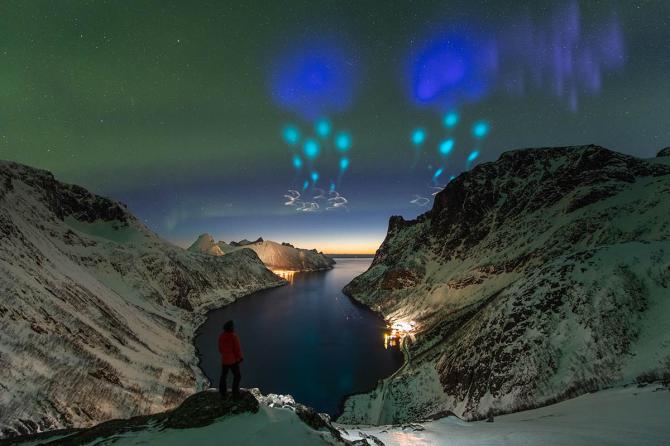
At the top of fjords in Arctic Norway, the photographer was met with an unknown sky. Was it aliens? Was it the supernatural? He captured a series of photos to record the night and didn’t know until the next day that the colours were actually created by the auroral zone upwelling rocket experiment from Andøya Space Centre, which dispersed gas tracers to probe winds in Earth’s upper atmosphere. Photograph: Yang Sutie/2020 Astronomy Photographer of the year
